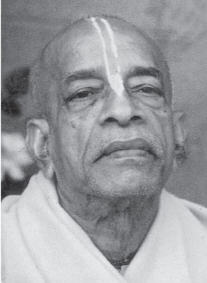Detriot – July 16, 1971
The goal of human civilization should not be material progress,
but the awakening of people's lost spiritual consciousness.
ajnana-timirandhasya
jnananjana-salakaya
caksur-unmilitam yena
tasmai sri-gurave namah
"I was born in the darkest ignorance, and my spiritual master opened my eyes with the torch of knowledge. I offer my respectful obeisances u


